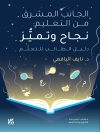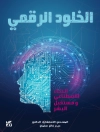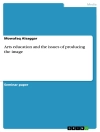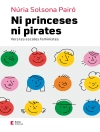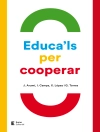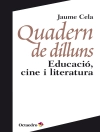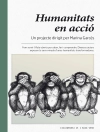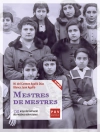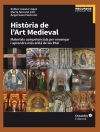Across the globe, American-style and liberal arts universities are being established. From the first, the American University of Beirut, established in 1866, to the liberal arts institutions being established in Saudi Arabia, Ghana, and elsewhere in the twenty-first century, there is a clear sense of the global desire for the American approach to higher education as a way of counteracting traditional, more narrowly defined university educations. However, these universities operate in a distinctive dynamic that must learn to bridge one culture with another, and leadership of such institutions must by its nature focus on such complexities and tensions. Throughout the chapters of this book, this unique element of these universities will be better understood through the stories and experiences as presented by their presidents, provosts, and other academic leaders.
İçerik tablosu
Preface
Ted Purinton and Jennifer Skaggs
Introduction: Understanding American and Liberal Arts Universities Around the World: Across Borders, What Is the Essence?
Ted Purinton and Jennifer Skaggs
1. Achieving Liberal Arts Education Transnationally: Where From, How, and Where To?
Richard A. Detweiler
2. ‘. . . To Save Us All’: Lessons from the American University in Cairo, a Community of Learning in Revolutionary Times
Lisa Anderson
3. AUN as a Development University-Preparing Nigerian Students for the Challenges of the Country
Margee Ensign
4. Identity and Mission in a Pluralistic Nation: The American University of Beirut
Peter Dorman
5. Study Abroad, Abroad: Leading the Global Liberal Arts in Paris
Celeste Schenck and Scott Sprenger
6. American University of Sharjah: A Young Institution Aiming to Become a Research University
Björn Kjerfve
7. BISLA and ECOLAS: Hubs of the Liberal Arts in Europe
Samuel Abrahám
8. Should Higher Education Be Vocationalized? The Role of Liberal Arts Education in Hong Kong
Ka Ho Mok
9. Trends in Liberal Arts Education in Japan
Junko Hibiya
10. From Hardship to Success: Building the Lebanese American University
Joseph G. Jabbra
11. Achieving Diversity and Excellence without the US Infrastructure
Mary Merva
12. Experiential Learning, Cheese, and Chocolate: Connecting Curriculum and Place
Sara Steinert Borella
13. Greek Lessons: The American College of Greece in the Greek Economic Crisis
David G. Horner
14. Greece’s Constitutional Provision on Private Higher Education and ACG’s Open University Affiliation
Thimios Zaharopoulos
15. Forman Christian College: The Rebirth of a Liberal Arts University in an Islamic State
James Tebbe and Joseph Jones.
16. Adapting the Liberal Arts Model to Create Ethical and Entrepreneurial Leaders for Africa: The Case of Ashesi University College, Ghana
Marcia A. Grant
17. IQRA ‘READ’: Making the Case for Effat Liberal Arts Education
Haifa Reda Jamal Al-Lail
18. Merging Local Customs with the Liberal Arts in Central Asia
Andrew Wachtel
19. Adapting Liberal Arts and Sciences as a System of Education
Jonathan Becker and Susan H. Gillespie
20. America and American Universities Abroad: Toward a Public Diplomacy Research Agenda
Kyle A. Long
21. New Perspectives on Legitimacy for American and Liberal Education: From Marginalization to Disruptive Innovation?
Kara A. Godwin
Yazar hakkında
Ted Purinton is Dean of the Graduate School of Education at the American University in Cairo. He is the author of
Creating Engagement between Schools and their Communities: Lessons from Educational Leaders with Carlos Azcoitia (2016);
Six Degrees of School Improvement: Empowering a New Profession of Teaching (2011); and
Making Sense of Social Networks in Schools, with Terry Deal and Daria Cook Waetjen (2008).
Jennifer Skaggs is an assistant professor at the American University in Cairo. Her publications and presentations regarding gender identity, undergraduate engineering programs, career and professional transitions, and international P-20 STEM allow her to speak to, and publish for, audiences spanning industry, non-profit, and educational interests. Currently she is researching holistic development of student identity and negotiation within transnational settings and how different educational practices translate across cultural and linguistic borders.


